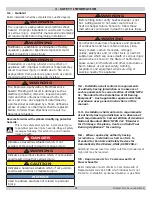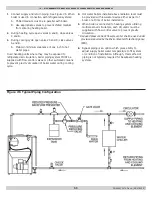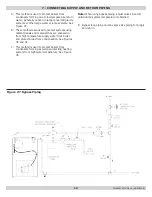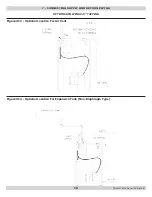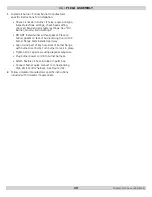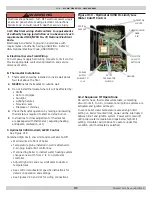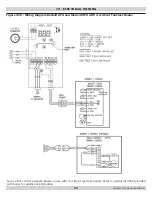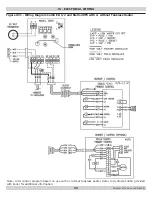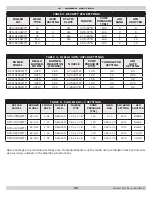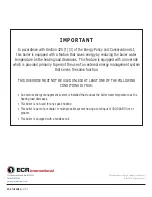
18
Chimney construction shall conform to the requirements
of authority having jurisdiction or in absence of such
requirements
NFPA 211, Standared for Chimneys,
Fireplaces, Vents and Solid-Fuel Burning Appliances.
Venting system installation shall conform to the
requirements of the authority having jurisdiction or in the
absence of such requirements, to
NFPA 31 - Standard for
the Installation of Oil Burning Equipment.
1.
INSPECT CHIMNEY
• Boiler shall be installed into chimney which has
masonry or metallic chimney liner�
• An unlined chimney will have leaks that will cause
poor chimney performance (NO DRAFT), and could
result in positive pressure in combustion chamber�
• Horizontal portions of venting system should
not exceed 10 feet in length� Horizontal lengths
over 10 feet will have negative effect on chimney
performance�
• Chimney should extend at least 2 feet above any
portion of building within 10 feet� See Figure #16�
It should produce negative draft of �06 to �08 inches
of water column, (W�C�), as measured with draft
gauge between boiler and barometric draft control
while maintaining �02 inch W�C� negative draft in
combustion chamber�
• Inadequate draft will cause improper combustion,
resulting in dirty flue ways and high fuel bills.
2.
CONNECT FLUE PIPE
•
Connect flue pipe same size as boiler outlet to
chimney, sloping upward continuously toward
chimney approximately ¼” per foot� Bolt or screw
joints together to avoid sag�
•
If oil fired water heater is vented into same flue as
boiler, provide separate hole into chimney whenever
possible� When not possible, use “Y” connection in
flue pipe, using separate draft regulator for each unit.
• When chimney will not provide adequate draft
to handle input from water heater and boiler
simultaneously, wire units so that only one will
operate at a time, favoring water heater�
9 - VENTING SYSTEM INSPECTION & INSTALLATION
Figure #16
PN 240013073, Rev. A [08/31/2020]

